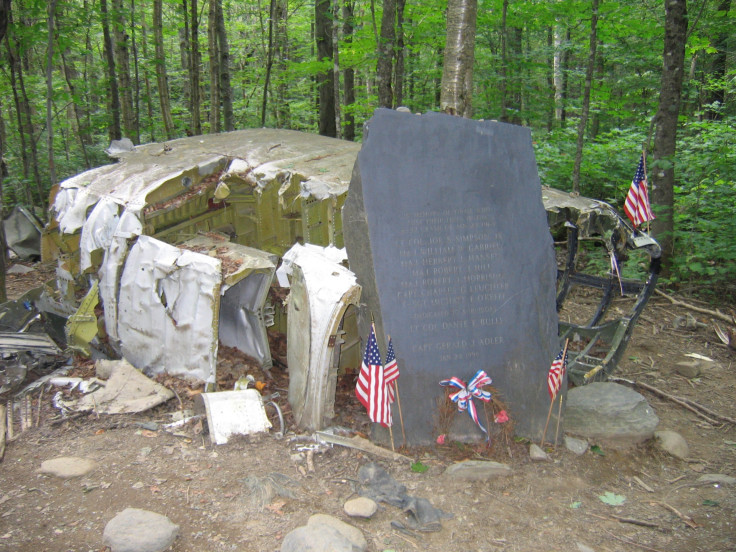
The ground was packed with snow Jan. 24, 1963 as Air Force Captain Gerald Adler prepared to take part in a routine, low-level flying test over Elephant Mountain in Maine.
A strong bout of turbulance derailed the test and turned it deadly with seven crew members dying as a vertical stabilizer broke off and sent the plane crashing into the snow-covered peak. Only three crew members had time to eject.
Adler landed still in his seat in the thick snow that saved his life after his parachute failed to deploy. He was battered, with broken, fractured skull and severe frostbite. When medic Eugene Slabinski dropped from his helicopter to save him, Adler was too disoriented and hurt to see his face clearly. All he remembered for 50 years was his red mustache.
That all changed Saturday at a rememberance event at the crash site, which is still littered with debris from the incident after all these years, the Associated Press reported. Adler and Slabinski met face-to-face and exchanged a tight hug, with Adler joking about how much his rescuer had changed with age.
"He doesn't have the red mustache anymore," Adler said of Slabinski's white hair.
A group of 75 joined Adler, 81, and Slabinski, 83, to remember the Cold War tragedy and those who were killed. The only other survivor besides Adler was the pilot Lt. Col. Dan Bulli, now 90. The third man who ejected was the co-pilot, who slammed into trees and was killed.
Bulli and Adler remained on the mountaintop after the crash for nearly 20 hours in below-freezing temperatures. Bulli wound up tangled in a tree when his parachute got stuck on his way down.
Slabinski, a first responder to the crash, found Bulli first as he had deployed an inflatable raft. He gave him morphine for a broken foot. Slabinski was relieved to find a second survivor among the wreckage, but Adler was in much worse shape than his pilot. He was unconscious for five days and his leg eventually had to be amputated due to gangrene.
The crash was buta segue to another that occured six days later in New Mexico. Both incidents led to the discover of a dangerous malfunction that caused vertical stabilizers to snap under certain conditions.
Adler told the AP that he had mixed emotions about the incident and the event as he survived when others died and lived to see his grandchildren while other people lost loved ones.
Bulli, who was not in attendace, had a set of engraved lighters sent to the five helicopter crew members of Otis Air Force Base after that crash that read "Thanks for the lift." Slabinski still has his.
Adler said the the crash serves to remind that military work can be dangerous, even during peacetime.
"Deaths don't always occur in combat. This is a noncombat situation, a combat simulation. That's why we were down so low. And seven men died," Adler said. "And people die all the time, and it's not just Vietnam, or Korea or World War II. Just give thanks that people are willing to give a portion of their lives over to help serve their country."
© 2025 Latin Times. All rights reserved. Do not reproduce without permission.




